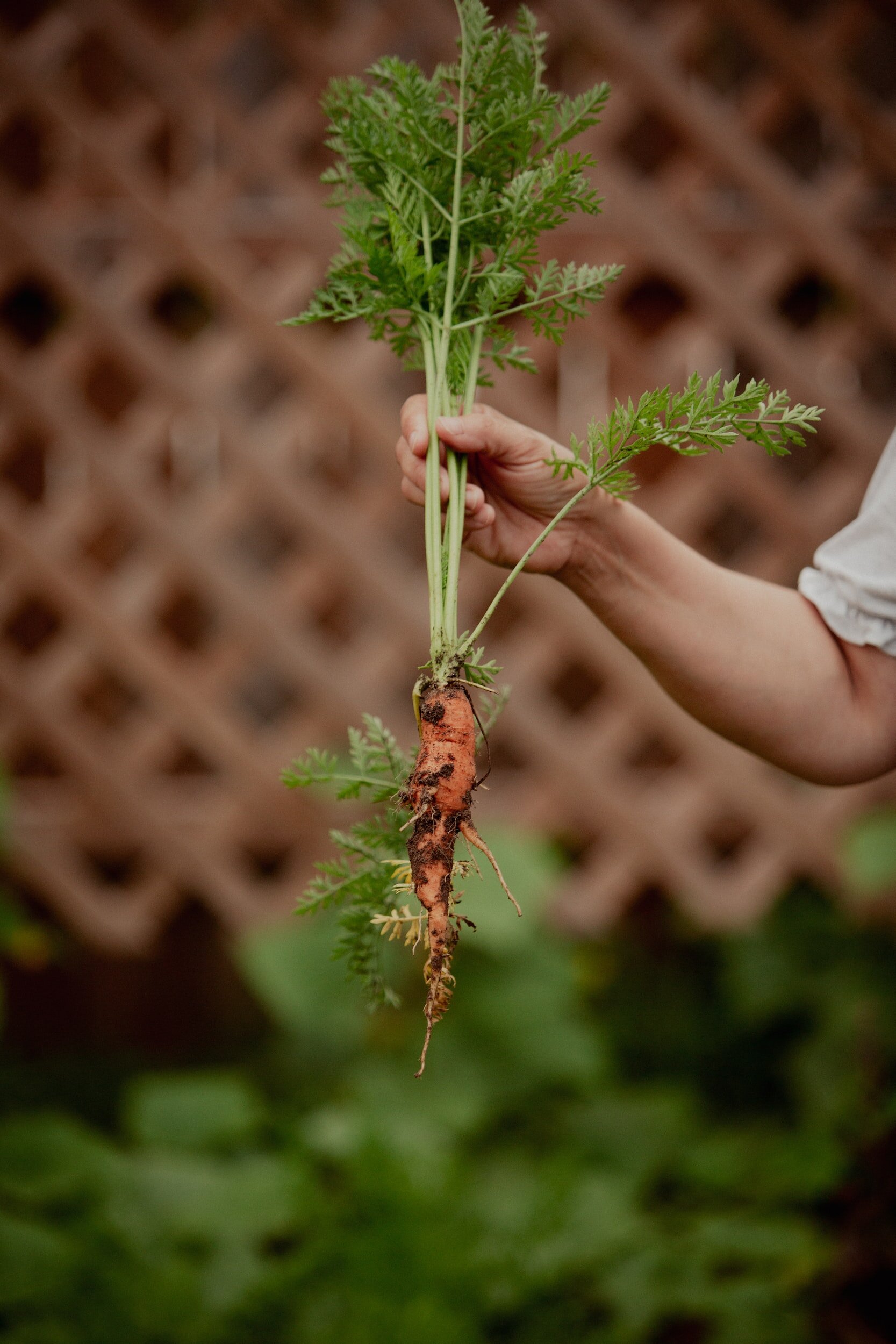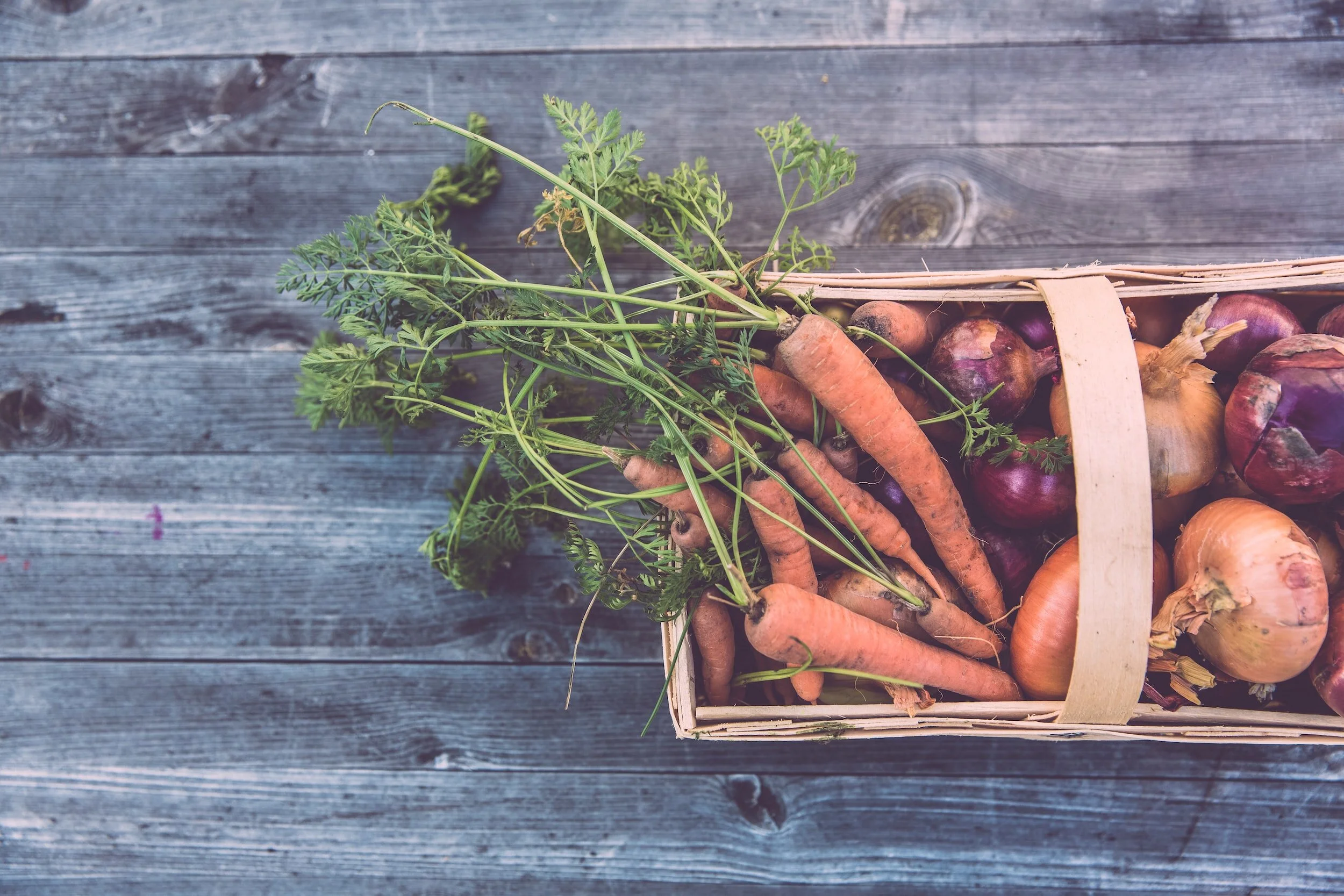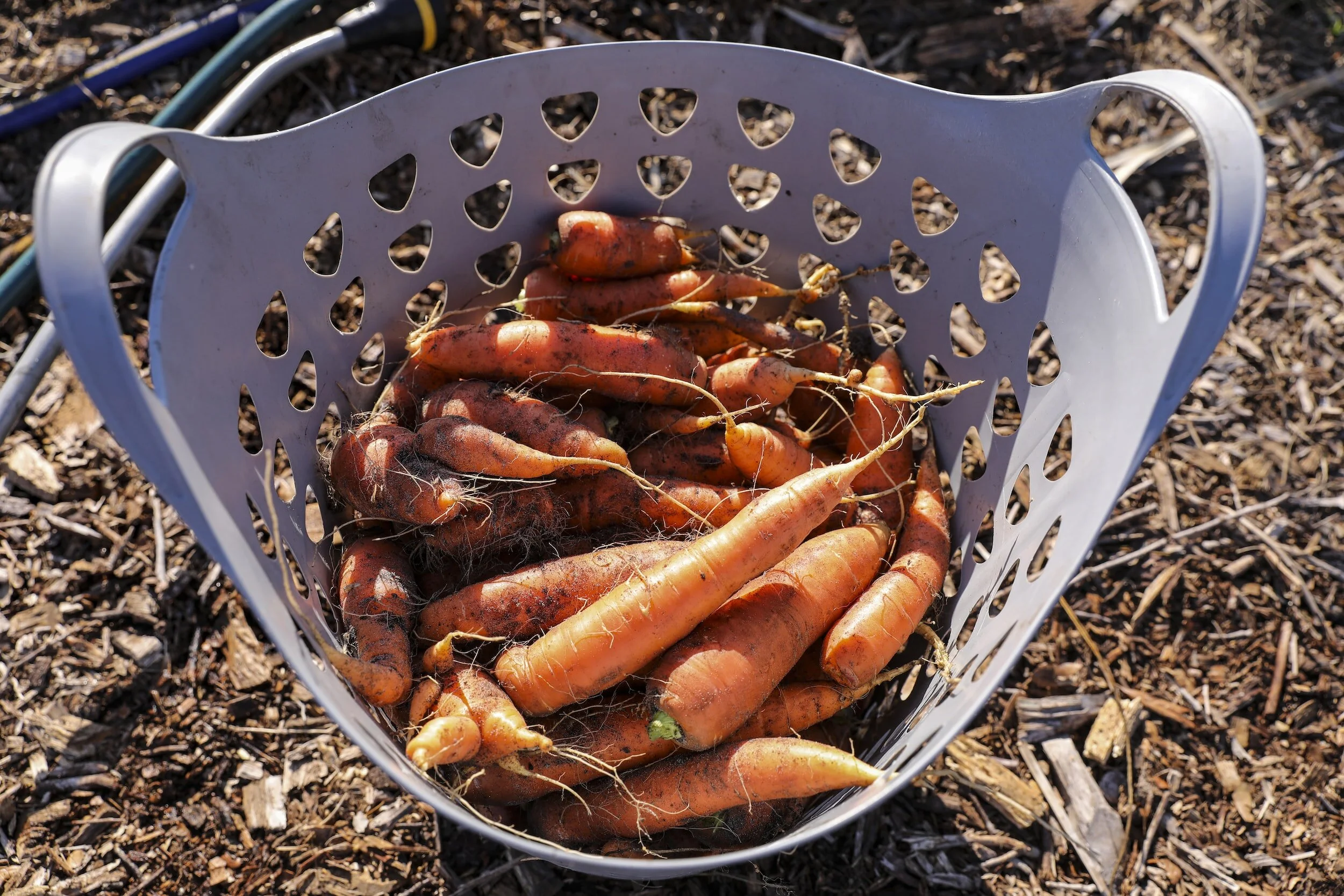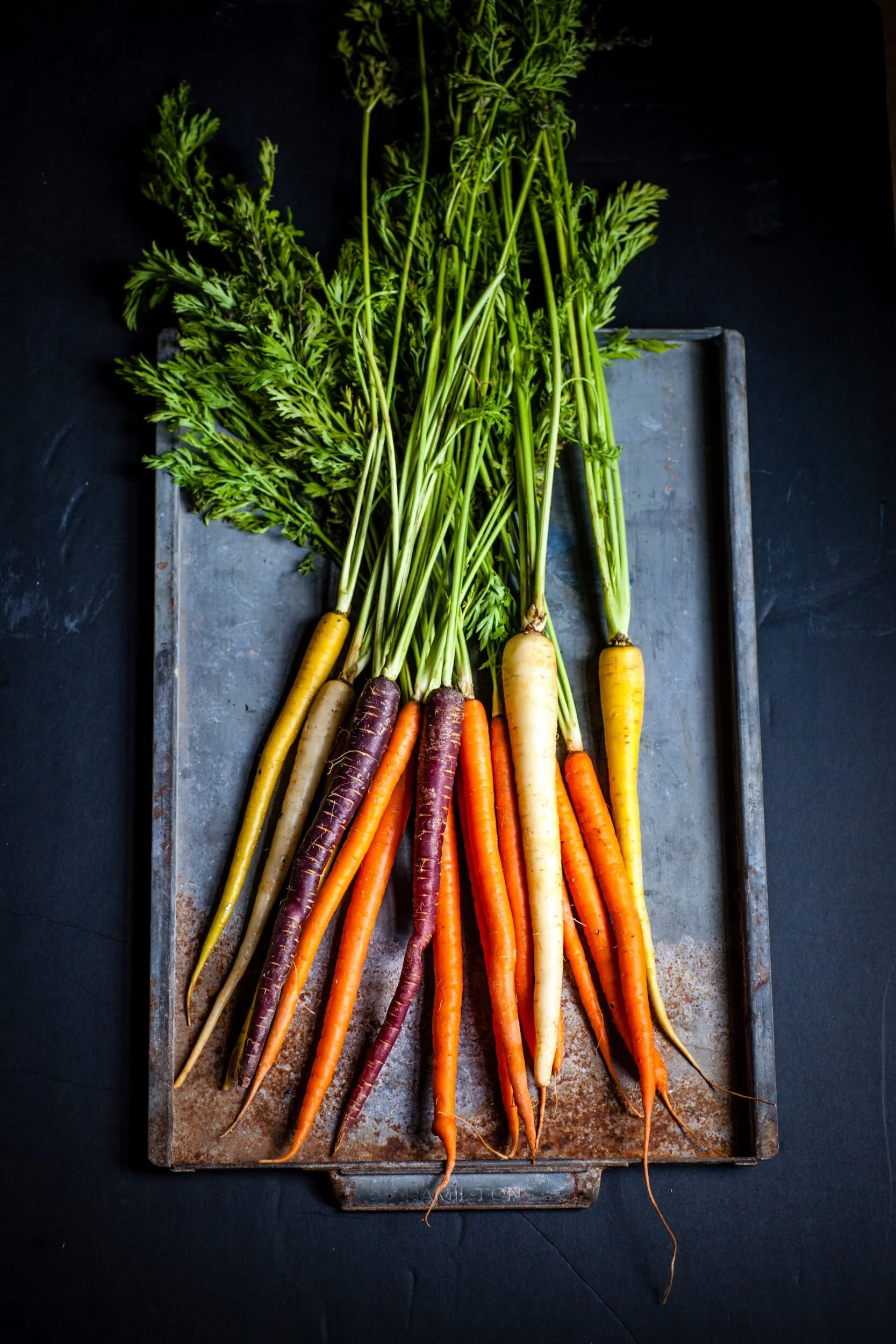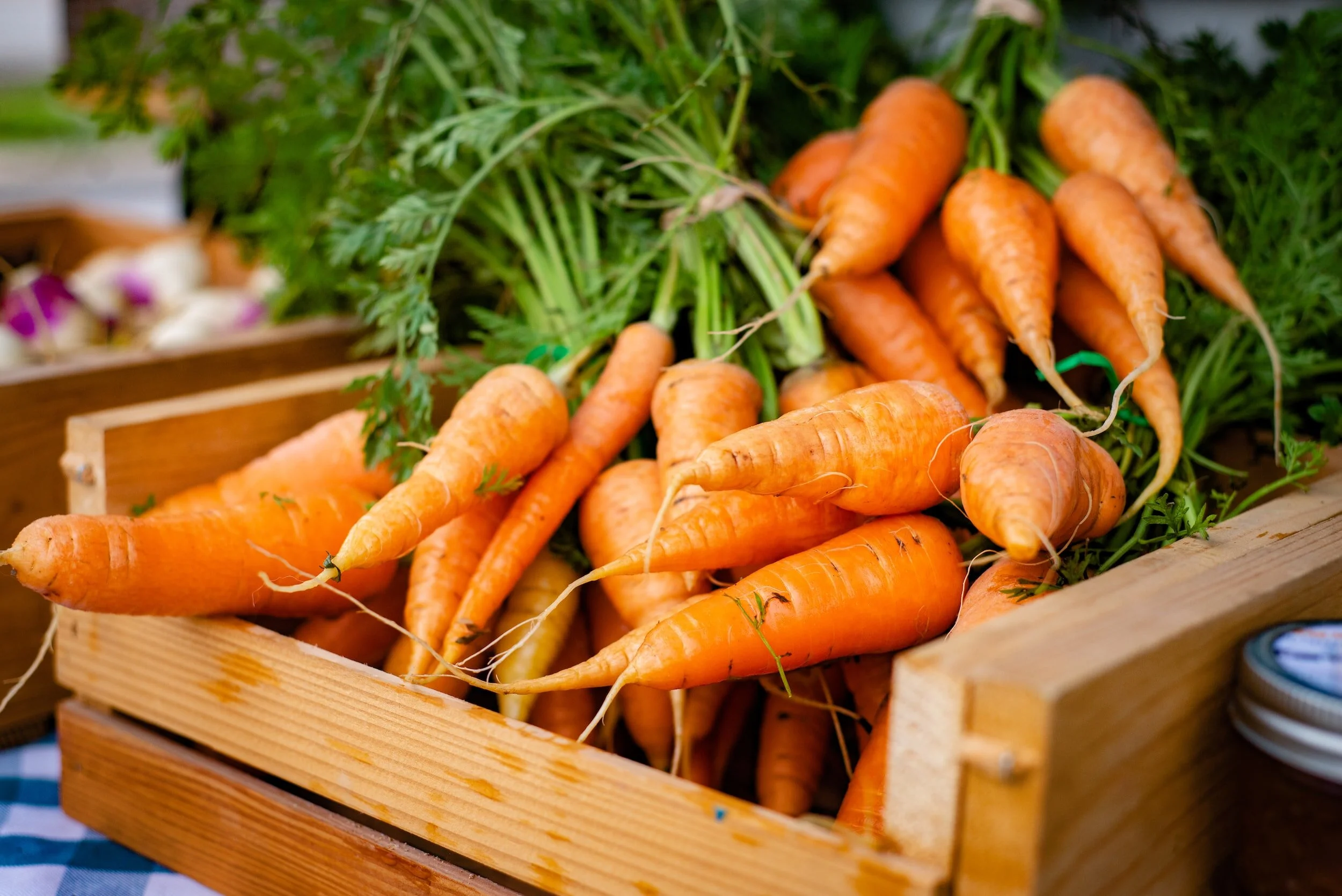When to Pick Carrots
As you watch your garden grow, the anticipation of tasting your first homegrown carrot of the season is undoubtedly building.
That vibrant burst of color beneath the foliage hints at the crunchy, sweet delight hiding beneath the soil's surface.
But when is the perfect moment to harvest those enticing roots?
And once harvested, how should you store them for maximum freshness and longevity?
This comprehensive guide is here to unravel these carrot-related mysteries.
From understanding the lifecycle of your carrot plants to recognizing the signs of a perfectly ripe carrot ready for harvesting, we'll walk you through every detail.
Whether you're growing traditional orange carrots, a rainbow of heirloom varieties, or trying your hand at carrots for the first time, we have all the knowledge and tips you need.
We'll also dive into what happens if you don't harvest your carrots, when and how to harvest different types of carrots, and crucial storage tips to keep your carrots fresh long after they've left the ground.
To learn more about growing carrots, check out my guides:
How Long Do Carrots Take to Grow From Seed?
Carrots are a root vegetable that can be grown directly from seeds in your home garden.
Generally, carrot seeds begin to germinate in about 14-21 days, but it's important to note that germination can be a bit slow and uneven, so patience is key when growing carrots.
The total time from planting to harvesting carrots usually ranges from 50 to 80 days depending on the variety.
This means that if you plant your carrot seeds in the spring, you'll typically be able to harvest them in the summer.
If you plant in the late summer, you'll usually be harvesting in the fall.
Here's a rough breakdown:
Germination:
This is when the seed starts to sprout, which usually occurs between 14-21 days after planting.
The soil should be kept consistently moist during this period, but not waterlogged.
Growth of the greens:
Following germination, the green tops of the carrot plant begin to grow.
It's a good sign of the carrot developing beneath the soil.
This stage usually takes about 30-40 days.
The greens help the plant photosynthesize and grow the root.
Root development:
This is when the actual carrot (the root) grows to its full size.
Depending on the carrot variety, this can take anywhere from an additional 20-60 days.
Each carrot variety has a different maturity time.
For example, smaller carrot varieties such as 'Nantes' or 'Thumbelina' may be ready to harvest within 50 days.
On the other hand, larger varieties like 'Danvers Half Long' or 'Autumn King' may take up to 75-80 days to fully mature.
Remember that you can also choose to harvest baby carrots, which are simply carrots harvested early for their smaller size and tender texture.
If you're interested in these, you can often start harvesting them as early as 30 days after planting.
It's always a good idea to refer to the specifics provided on your seed packet as they will give you the most accurate information for your particular variety of carrot.
Keep in mind that the growing conditions, particularly the quality of the soil and the weather, can affect how quickly your carrots grow.
Well-drained, loose soil, plenty of sunlight, and regular watering usually help carrots grow well.
Ready to harvest more from your garden? Check out my harvest guides:
When to Harvest Butternut Squash
How to Know When Carrots Are Ready to Harvest
Gardeners often ask, "When do you pick carrots?" or "How do you know when carrots are ready to harvest?".
The truth is, determining when carrots are ready to harvest can be a bit of a guessing game, but there are signs you can look out for.
The tops of the carrot plants, the carrot tops or "greens", are usually the first indication.
When the green tops are vibrant, bushy, and around 4 to 6 inches in height, your carrots might be ready.
For a more accurate gauge, look at the diameter of the carrot itself.
You can do this by brushing away a bit of soil at the top of the carrot.
Most carrot varieties are ready to harvest when they are about 1 inch in diameter at the top end, although they can be harvested when they are smaller if you prefer tender, baby carrots.
Understanding the right time to harvest your carrots ensures that you're getting the most out of your gardening efforts and enjoying the best possible flavor and texture from your carrots:
Days to Maturity
Start by noting the "days to maturity" on your seed packet.
This will give you a rough estimate of when the carrots should be ready to harvest.
Keep in mind that these are approximate numbers and carrots mature a little before or after the date.
Observe the Carrot Greens:
The tops of the carrot plants, or "greens", provide the first clues about the readiness of the carrots.
When they're bushy and vibrant and have reached about 4 to 6 inches in height, it's a good sign that the carrots might be ready for harvesting.
Check the Diameter:
To be more accurate, you can measure the top of the carrot, which should be peeking out of the ground.
The diameter of the top of the carrot is a good indication of the maturity of the vegetable.
Most varieties are ready to pick when they have reached about 1 inch in diameter at the widest point.
Do a Test Harvest:
When you think your carrots might be ready, pull one or two from the ground to check their size and taste.
If they're smaller than you'd like, or not as flavorful, give the remaining carrots more time to grow.
Remember, the longer you leave the carrots in the ground, the larger they will become, but if left too long, they may turn woody and lose their sweet flavor.
Color and Appearance:
The color of the carrot is another good indicator of its maturity.
If the carrot has reached its full color (whether that's orange, purple, red, or yellow, depending on the variety), it's likely ready to harvest.
If the top of the carrot that's visible above the soil is still green, it may need a little more time.
Remember, there's quite a bit of flexibility when harvesting carrots.
They can be harvested early as tender, small carrots, or left in the ground longer to achieve larger sizes.
As long as the ground doesn't freeze, carrots can often be left in the ground until you're ready to use them.
This makes carrots a very forgiving crop.
My favorite carrots to grow:
For more gardening tips, check out my guide:
How to Harvest Carrots
When harvesting carrots, it's crucial to be gentle to avoid damaging the roots.
Water the ground lightly to moisten the soil, which makes the carrot crop easier to pull.
Grasp the carrot greens firmly at the base, and wiggle the carrot a bit to loosen it before pulling it straight up from the ground.
Harvesting carrots can be a rewarding task, especially when you do it right.
Here are some steps to guide you through the process:
Water the Soil
Begin by watering the soil around the carrots lightly.
The goal here is to soften the ground a bit to make the pulling process easier and avoid damaging the carrots.
Loosen the Soil
Gently loosen the soil around the carrot with a garden fork or a hand cultivator.
Be careful not to go too deep or too close to the carrot, as you might risk piercing the vegetable.
This hand cultivator is perfect for the job:
Pull the Carrot
Reach down and grasp the carrot greens as close to the ground as possible to ensure a firm grip.
Pull the carrot gently, twisting it slightly back and forth to help ease it out of the ground.
It should come out of the ground with a slight tug.
If the carrot is particularly stubborn, water a little more and try again.
Handle with Care
After pulling, handle the carrots with care.
Be careful not to break off the tops or damage the skin, as this can lead to quicker spoilage.
Removing the Greens
If you're not going to use the carrots immediately, it's best to cut off the greens about 1/2 inch from the top of the carrot.
Leaving the greens attached can draw moisture from the carrot, causing them to wilt faster.
However, do not cut into the actual carrot, as this can expose it to bacteria and lead to faster spoilage.
Cleaning
Rinse the harvested carrots gently under cool water to remove any soil.
Refrain from using a brush or scrubbing the carrots too harshly as it may damage the skin.
Remember, the goal is to harvest carrots when they're at their peak for the best taste and texture.
If your carrots are smaller than expected, it may be a sign that they need a bit more time in the ground.
However, small, tender carrots are also delicious, so don't be disappointed if your harvest includes some "baby" carrots!
Also, consider that harvesting should ideally be done in cool weather, either early morning or late evening.
The cool temperatures reduce the amount of stress on the plants, allowing for a more successful harvest.
So, get out in your garden, follow these steps, and enjoy the fruits (or in this case, roots) of your labor!
What Happens if You Don't Harvest Carrots?
You might be wondering, "What happens if you don't harvest carrots?" or "How long can you leave carrots in the ground?".
If left in the ground, carrots continue to grow until the ground freezes, but they might become too large and woody to enjoy.
Alternatively, if you live in a milder climate, carrots can remain in the ground for storage and be harvested as needed.
If you don't harvest carrots, several things can happen depending on the conditions in your garden and the timing:
Continued Growth
If left in the ground during the growing season, carrots will continue to grow.
They might get larger, but if they grow too big, they can become woody and their flavor can turn bitter.
The quality of the texture and flavor can significantly decline if they are left in the ground for too long.
Bolting
If your carrots are left in the ground into the next growing season (especially if there's a cold winter followed by a warm spring), they can bolt, which means they'll send up a flower stalk to produce seeds.
When a carrot bolts, it's typically not as good for eating.
Its energy is directed towards seed production, making the root woody and bitter.
Pests and Diseases
Leaving mature carrots in the ground longer than necessary can expose them to pests and diseases.
Carrot fly larvae and other pests, for example, can burrow into the carrot roots, leaving tunnels and potentially spoiling the crop.
Overwintering
In regions with milder winters, you can intentionally leave carrots in the ground to keep them fresh and continue harvesting as needed.
The soil acts as natural insulation, and the cold temperatures can even make the carrots sweeter.
However, if the ground freezes, it can damage the texture and taste of the carrots.
Rotting
If carrots are left in overly wet and poorly drained soil, they can start to rot.
It's crucial to maintain proper soil conditions to prevent this from happening.
So, while carrots offer some flexibility in terms of when they need to be harvested, leaving them unharvested for too long or under inappropriate conditions can lead to less-than-desirable outcomes.
It's best to harvest your carrots when they're at their peak for optimal flavor and texture.
For more tips, check out my guide:
When to Harvest Rainbow Carrots
Rainbow carrots refer to a mix of carrot varieties that come in different colors, including traditional orange, as well as purple, yellow, red, and white.
Just like traditional orange carrots, the time to harvest rainbow carrots can vary depending on the specific variety, but generally falls between 50 and 80 days after planting the seeds.
Always check the seed packet information for the most accurate timeline for your specific varieties.
Here are some signs to know when rainbow carrots are ready to harvest:
Check the Tops
The green tops of the carrots, or carrot greens, provide an initial hint of the readiness of the carrots.
Once they're bushy and vibrant, reaching about 4 to 6 inches in height, the carrots might be ready for harvest.
Measure the Diameter
The diameter of the top of the carrot, which should be peeking out of the ground, is another good indication of the maturity of the carrot.
Most varieties are ready to harvest when they've reached about 1 inch in diameter at the top end.
Perform a Test Harvest
The most reliable way to know if your rainbow carrots are ready is to gently pull one out and check it.
If it's smaller than you’d like or doesn't have the expected color, you can leave the rest in the ground a little longer.
Color and Appearance
Since rainbow carrots come in different colors, you can check the color of the carrot just above the soil line.
If it has reached its mature color (as per the variety), it's likely ready to harvest.
Keep in mind that just like orange carrots, rainbow carrots can be harvested early for smaller, tender carrots or left in the ground a little longer for larger carrots.
As long as the ground doesn’t freeze, they can be left in the ground until you’re ready to use them.
So, keep an eye on these indicators and enjoy the vibrant array of colors when harvesting rainbow carrots from your garden!
Storing Your Harvested Carrots
Once you've finished harvesting fresh carrots, proper storage is crucial to maintain the freshness of your homegrown carrots.
If you have a root cellar, it is an ideal place to store carrots.
Keep them in a cool, humid, and dark environment to preserve their crisp texture and taste for several months.
Here are a few steps to storing your freshly harvested carrots:
Clean
Gently brush off any soil from the carrots, but don't wash them unless you're going to use them immediately.
The moisture from washing can encourage decay during storage.
Remove Greens
Cut off the greens about an inch above the carrot.
Leaving the greens on can cause the carrots to wilt faster as they draw moisture from the roots.
However, don't throw those greens away, they can be used in recipes or composted!
Sort
Sort through your carrots and separate any that have nicks, cuts, or signs of rot.
These should be used first and not stored for long periods, as they can decay faster and affect the other carrots.
Refrigeration
For short-term storage (a few weeks), you can refrigerate your carrots.
Store them in the crisper drawer of your refrigerator in a perforated plastic bag, or wrap them in a damp cloth or paper towel to maintain humidity and prevent them from drying out.
Root Cellar
For long-term storage, a root cellar is a traditional and effective method.
Store the carrots in boxes or bins filled with damp sand or sawdust.
The carrots should not touch each other to avoid the spread of rot if one starts to spoil.
The root cellar should be dark, humid, and cool (32–40°F or 0–4°C).
Freezing
Carrots can also be frozen for long-term storage.
First, you'll need to blanch them (briefly boil and then plunge into ice water) to kill the enzymes that cause spoilage.
After blanching, drain the carrots, let them cool, and pack them into freezer bags or containers.
They can be stored frozen for up to a year.
Canning or Pickling
Another option for long-term storage is canning or pickling.
This involves a bit more work upfront but can give you delicious preserved carrots that can last for a long time.
By properly storing your homegrown carrots, you can enjoy your harvest long after the growing season is over!
Remember that it's important to regularly check stored carrots for any signs of spoilage and remove affected ones promptly.

